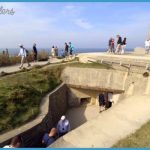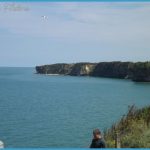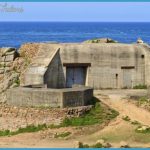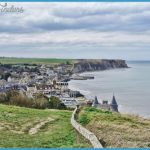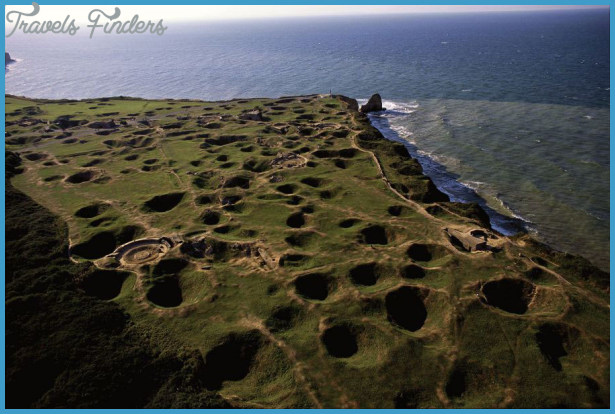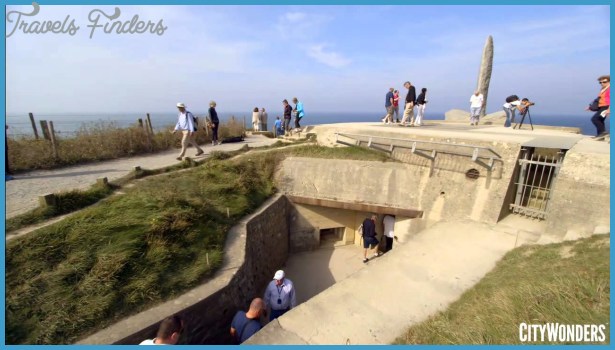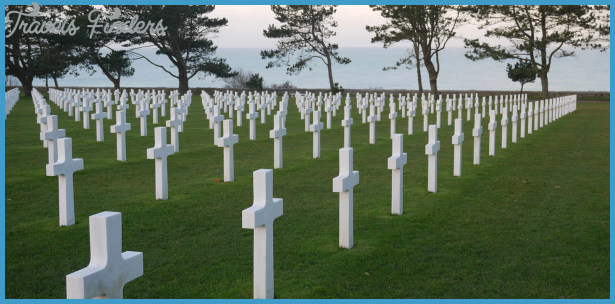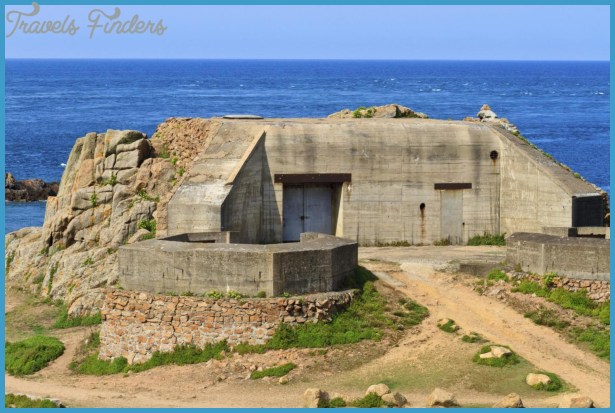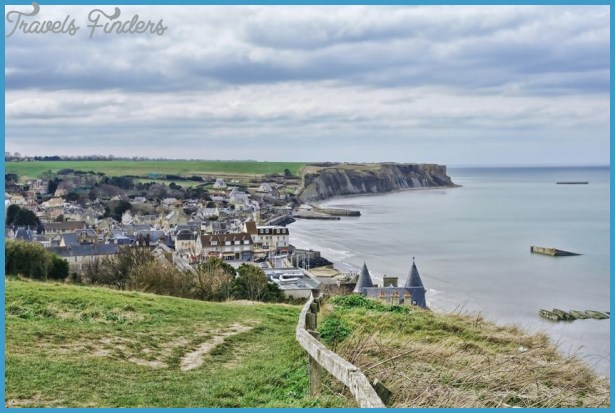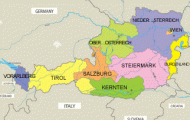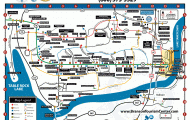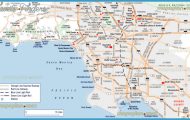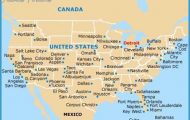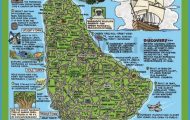D-DAY BEACHES PARIS
On June 6,1944, over one million Allied soldiers invaded the beaches of Normandy in the first of a chain of events that liberated France and led to the downfall of Nazi Europe. Today, reminders of that first devastating battle can be seen in somber gravestones, remnants of German bunkers, and the pockmarked landscape.
TRANSPORTATION
Reaching and exploring the D-Day beaches can be difficult without a car. That said, many of the sites are accessible from Caen and Bayeux with Bus Verts (08 10 21 42 14); ask about the special D-Day line. A day pass (‚17) takes you to four mayor sites. Utah Beach is accessible only by car or foot from Ste-Mere-Eglise. Take a train from Bayeux to Caretan (30min. 10 per day, ‚6.60) and then a bus from Caretan to Ste-Mere-Eglise (15min.; 12:50pm, return 6:35pm; ‚2.90). English-language Victory Tours leave from behind the Bayeux tourist office, (a 02 31 51 98 14; www.victory-tours.com. 4hr. tour 12:30pm, ‚31; 8hr. tour 9am, ‚54. Reserve ahead.)
BEACHES NEAR BAYEUX
At Utah Beach, near Ste-Marie du Mont, the Americans headed the western flank of the invasion. The Musee du Debarquement here shows how 836,000 troops, 220,000 vehicles, and 725,000 tons of equipment came ashore, f 02 33 71 53 35. Open June-Sept. daily 9:30am-7pm; Oct.-May reduced hours. ‚4.50.) The most difficult landing was that of the First US Infantry Division at Pointe du Hoc. The Pointe is considered a military cemetery because many who perished are still there, crushed beneath collapsed concrete bunkers. Omaha Beach, next to Colleville-sur-Mer and east of the Pointe du Hoc, is perhaps the most famous beach and the severe losses suffered there bestowed the moniker bloody Omaha. Overlooking the beach, 9387 graves stretch across the American Cemetery. (Open daily 9am-5pm.) Ten kilometers north of Bayeux and just east of Omaha is Arromanches, a small town at the center of Gold Beach, where the British built the artificial Port Winston in a single day to provide shelter while the Allies unloaded their supplies. The Arromanches 360° Cinema combines images of modem Normandy with those of D-Day. Turn left on r. de la Batterie from the museum and climb the steps to get there. (Open June-Aug. daily 9:40am-6:40pm; Sept.-May reduced hours. Closed Jan. ‚3.70, students ‚3.30.)
M0NT-ST-MICHEL
Rising like a vision from the sea, the fortified island of Mont-St-Michel (pop. 42) is a dazzling labyrinth of stone arches, spires, and stairways that climb up to the abbey. Adjacent to the abbey church, La Merveille, a 13th-century Gothic monastery, encloses a seemingly endless web of passageways and chambers. (Open May -Aug. daily 9am-7pm; Sept.-Apr. 9:30am-6pm. ‚7, ages 18-25 ‚4.50.) The Mont is most stunning at night, but plan carefully there is no late-night public transport off the island. Mont-St-Michel is best visited as a daytrip via a Courriers Bretons bus, 104 r. Couesnon in Pontorson (02 33 60 11 43), from Rennes (l’dir. 3-6 per day, ‚11) or St-Malo C1 ‘ahr. 2-4 per day, ‚9). Hotels on Mont-St-Michel are expensive, starting at ‚50 a night. The Pontorson tourist office, pi. de l’Eglise, helps visitors find affordable accommodations (02 33 60 20 65; fax 02 33 60 85 67. Open July-Aug. M-F 9am-12:30pm and 2-6:30pm, Sa 10am-12:30pm and 3-6:30pm; Sept.-June reduced hours.) The cheapest beds are at the Centre Dugusclln (HI) O, r. General Patton. (fax 02 33 60 18 65. Dorms ‚8.) Postal Code: 50116.


